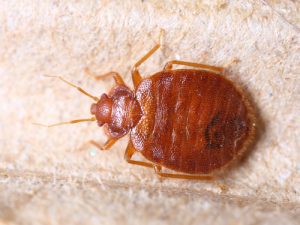East Coast Bed Bug Epidemic
By Chris Williams on October 26, 2010.
“Sleep tight; don’t let the bed bugs bite!” This iconic American bed time phrase is more real than ever for people living on the East coast in cities like New York and Boston. The creepy little critters were thought to be a thing of the past, especially since it has been at least 50 years since this many cases have popped up. Now every state has had reports of the critters. The east coast has been hard hit, and in every kind of site from apartments to hotels, resorts to subways, offices to retail stores. Since exterminators can no longer legally use the pesticides they used in the 1950s to get rid of the bugs the first time around, they now must get creative to stop a bed bug epidemic.
 Although there is not a single reason of why bed bugs have returned, there are a few theories. With the recent rise in international travel, not only are people visiting the U.S. from nations with bed bug problems, but U.S. citizens are visiting those countries and bringing the bugs back home in their bags; not on purpose, of course. Some people do not have adverse reactions to the bugs, and may never have known they were bitten, making it easier for the bugs to travel unnoticed. Also, it is common that the bites won’t show on your skin for several days, which makes it difficult for the victim to pinpoint the actual location of the bite.
Although there is not a single reason of why bed bugs have returned, there are a few theories. With the recent rise in international travel, not only are people visiting the U.S. from nations with bed bug problems, but U.S. citizens are visiting those countries and bringing the bugs back home in their bags; not on purpose, of course. Some people do not have adverse reactions to the bugs, and may never have known they were bitten, making it easier for the bugs to travel unnoticed. Also, it is common that the bites won’t show on your skin for several days, which makes it difficult for the victim to pinpoint the actual location of the bite.
Many high profile reports and lawsuits have popped up recently on the east coast. The problem is no longer confined to hostels and the shady hotels on the corners. Cheap and dirty or expensive and clean, either type of place you stay in is likely to have bed bugs now. Summer travel season helps the creatures find new homes and hotels, and the fall semester of college will help them infest our universities that have on-campus housing. And when students return from school, they can bring hitch-hiking bed bugs home with them.
Understanding Bed Bugs: Adult bed bugs are a reddish-brown color with an appearance similar to a small tick. They are flat and oval. Bed bugs can survive fairly extreme temperatures and most modern insecticides, which makes them very difficult to kill. The creepy nocturnal critters feast at night and in dark areas of your home; they are very hard to see. When they lights are on, they hide safely in nooks and crevices. And bed bugs can survive up to a year without any feeding. This means you can be moving into a home already infested, even if it has not had any residents for a while. When it comes to transportation, the evil bugs are hitchhikers. They will easily jump on board your suitcase, clothing, boxes, or anything with some dark space that can carry them to a new home.
How to look for bed bugs: Although most people do not begin searching for the evil bugs until after bites have shown up, you can prevent an attack altogether by searching the room before ever unpacking. They like to live in the crevices of mattresses, box springs, couches, and chairs, so whenever you check into a hotel, thoroughly examine those places first. If you are at home, check your sheets because they will often leave small red blood stains on the surface of wherever they attacked. A newer form of detection is bed bug detection dogs that are almost 90% effective and can find the infestation within minutes.
How to get rid of bed bugs: Bed bugs are harder than ever to get rid of. Scientists have found that the bugs are resistant to numerous pesticides once thought effective. It takes quite a bit of effort to eliminate a bed bug infestation today, including using numerous pesticides and alternative approaches. It is a good idea to immediately call a professional pest control company who has the methods and tools to kill bed bugs. Physically vacuuming up the insects is a good alternative method but it can be difficult to find and kill every single bug. Installing bed bug proof encasements on your mattresses and box springs eliminates some of their favorite hiding places. Since bed bugs die when exposed to a temperature of 113 degrees Fahrenheit for one hour, a heat treatment can kill any bugs exposed to this level. Once you take care of where they live, you need to wash all of your clothes in hot water and then run them through the dryer. Most importantly, the best way to get rid of bed bugs is to prevent them in the first place. These insects are tough to spot and kill once you have an infestation, so take all precautions necessary to prevent one.
How to prevent bed bugs. Do not scavenge mattresses, beds, or other furniture that has been discarded—it may be infested with bed bugs. Likewise, inspect carefully to make sure there are no bed bugs in any used or reconditioned items you have purchased (or been given). Take precautions when traveling, including inspecting your bed and headboard for evidence of bed bugs, and carefully inspecting your luggage upon your return. Be alert to signs of infestation!